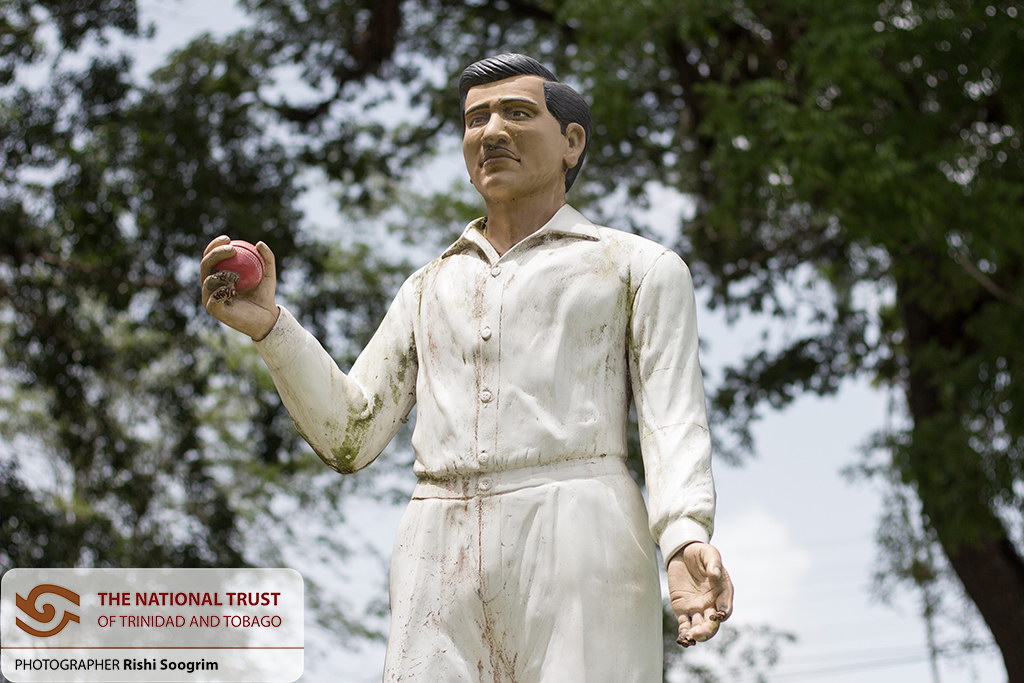
Sonny Ramadhin is known for several things. He was born on May 1, 1929, in St Charles Village, Esperance. He was the first man of Indian descent to play for the West Indies Cricket team. Additionally, he is known for his skill as a very talented spin bowler. Ramadhin played a key role during a historic match in 1950, the first time that the West Indies Cricket Team beat the English Cricket team. He is the last living player from this match.
The cricket match took place at Lords Cricket grounds in England. This was a historic event because cricket at the time was seen as a gentlemen’s sport, and the British, who introduced cricket to the West Indies when they colonized it, did not believe that they would one day be beaten by a team of colonial subjects. Even though cricket at the time was affected by racism, Ramadhin however remembered that there was unity in the 1950 team.
Ramadhin paved the way for others of Indian descent to play on the West Indies cricket team. His grandparents came from India to work as indentured labourers in Trinidad. His parents worked on Picton Estate but they died when he was only two years old. He was raised by his uncle, aunt and grandmother. He was introduced to cricket at the Canadian Mission School in Duncan Village. Ramadhin worked on Palmiste estate at age 13. He said that around 3 pm the overseer would send him to prepare the cricket pitch. He remembers playing cricket there and in order to win a penny, he had to bowl and hit the wicket. He believed that this is where he got the talent to bowl directly at the stumps.
Ramadhin got the chance to play during the 1950 West Indies tour of England. At the time of the match he was 21 years old and it was his second Test match. He could spin the ball both ways, this took the English batsmen by surprise. At the match, Ramadhin and the other spin bowler, Alf Valentine, brought down the English batsmen. Ramadhin alone took down eleven wickets in the two innings.

Sonny Ramadhin (left) and Alf Valentine (right), West Indies Cricket Team, spin bowlers
Source: Guardian News and Media Limited
This was a historic match for another reason also. The first generation of Caribbean people who had migrated to England to fill the labour shortage of World War 2 were able to attend the match. These people had arrived on a ship called the Empire Windrush in 1948 and they were known as the Windrush Generation after this. So the West Indies team was able to play in England with fans from their home countries cheering them on. Among the fans were Lord Beginner and Lord Kitchener, calypsonians who both wrote songs about the match.
Ramadhin was awarded the Hummingbird Gold Medal in 1972 and the Chaconia Gold Medal in 1995. He retired from the West Indies team in 1961 and went on to play cricket for British teams and retired in England. He is still alive at 91 years old.
Sources:
Surtees, Joshua. Sonny Ramadhin: ‘In 1950 we had the three Ws – England had Len Hutton’. The Guardian. Wednesday 8th July 2020. https://www.theguardian.com/sport/2020/jul/08/cricket-sonny-ramadhin-in-1950-we-had-the-three-ws-england-had-len-hutton
ESPN cricinfo. https://www.espncricinfo.com/westindies/content/player/52804.html
ESPN cricinfo. https://www.espncricinfo.com/wisdenalmanack/content/story/154617.html
Khan, Nasser. Sonny Ramadhin – The original Doosra. The Trinidad and Tobago Guardian. April 4th, 2010. https://www.guardian.co.tt/article-6.2.332113.3a672e82e5
Address: Palmiste Park
Town/City: Palmiste
Region: Penal – Debe
Site Type: Cultural Heritage
Ownership:
Public Accessibility:
Cultural Community: East Indian
Site Features: Memorials & Statues
Palmiste Park, Palmiste, Penal – Debe


